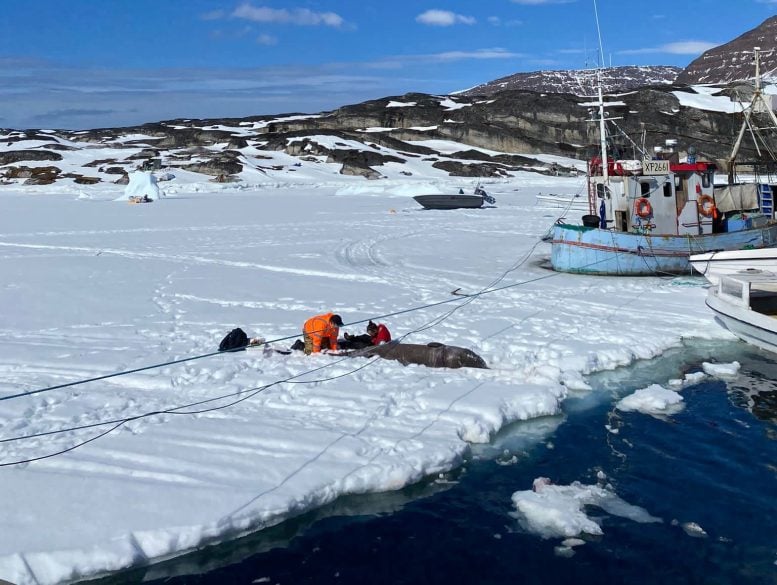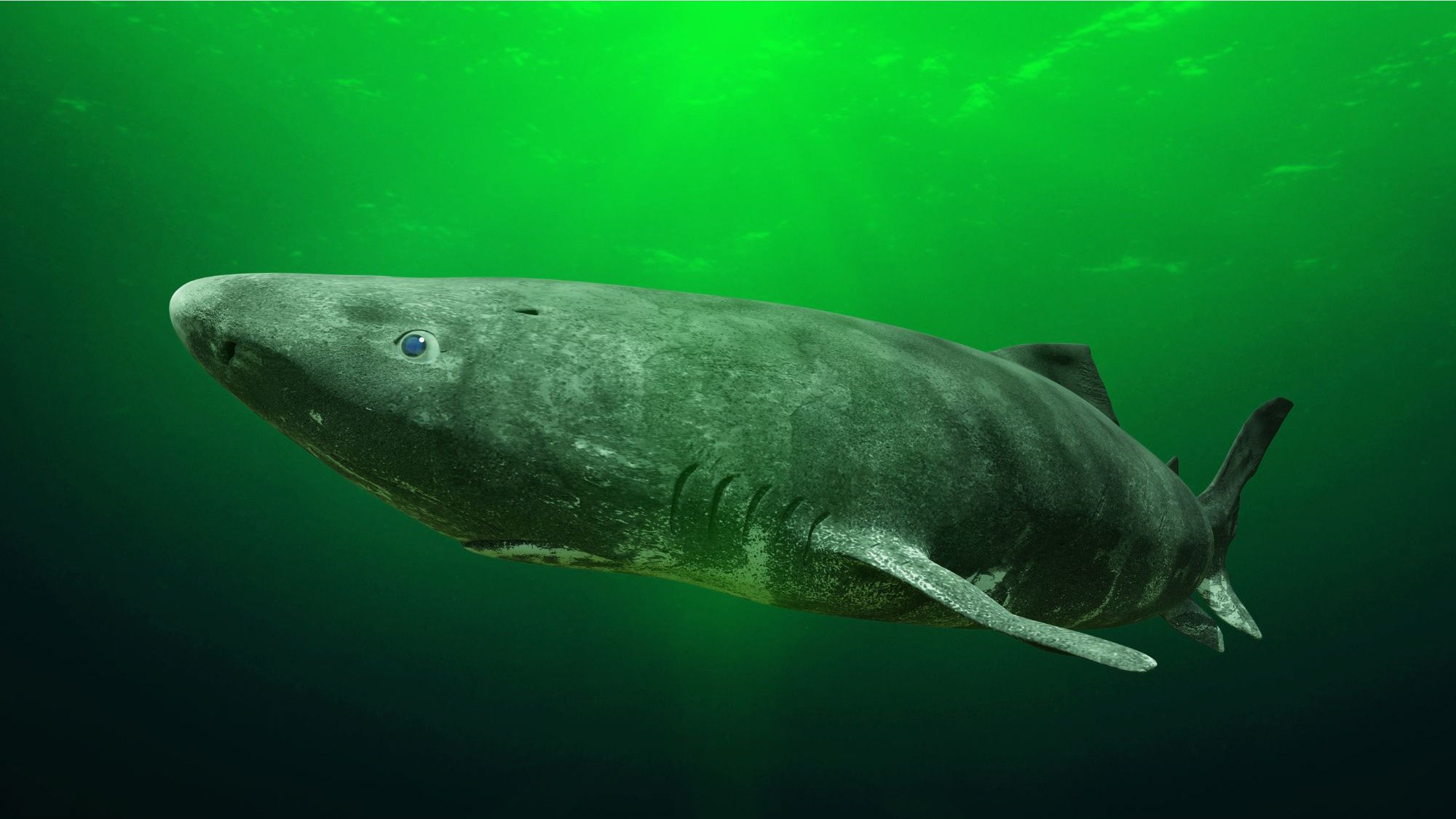Recent studies on the Greenland shark, the longest-living vertebrate, reveal that its stable muscle metabolic activity across different ages may be key to its extraordinary longevity. Led by Mr. Ewan Camplisson from the University of Manchester, the research not only challenges previous beliefs that attribute the shark’s lifespan to its cold environment and minimal movement but also opens potential avenues for conservation strategies and human cardiovascular research.
New research suggests that stable muscle metabolism is crucial to the Greenland shark’s longevity, offering insights into conservation and human health.
Recent experimental research indicates that muscle metabolic activity might play a crucial role in the exceptional longevity of the world’s oldest living vertebrate 
Tissue collection from a Greenland shark. Credit: Ewan Camplisson
The results of this study also show that the Greenland shark’s metabolic enzymes were significantly more active at higher temperatures. “This would suggest that the shark’s red muscle metabolism is not specially adapted for the polar environment, otherwise we would have expected to see less of a temperature-related difference in activity,” says Mr Camplisson.
In a world with a rapidly changing climate, long-lived species that are less able to adapt may be the most at risk of extinction. “A female Greenland shark may not become sexually mature until it is 150 years old and with such a long generation time, the species will have far less of a chance to adapt to anthropogenic changes in their environment,” says Mr Camplisson.
Mr Camplisson plans to test more enzymes and tissue types to gain an even deeper understanding of the shark’s metabolic activity. “My ultimate goal is to protect the species and the best way to do this is to better understand them,” he says.
Mr Camplisson is also interested in the possible applications of this research for our understanding of human heart disease. “By studying the Greenland shark and its heart, we may be able to better understand our own cardiovascular health,” he says. “These are issues that become progressively more common and severe with increasing age.”
Meeting: SEB Annual Conference 2024





















Discussion about this post